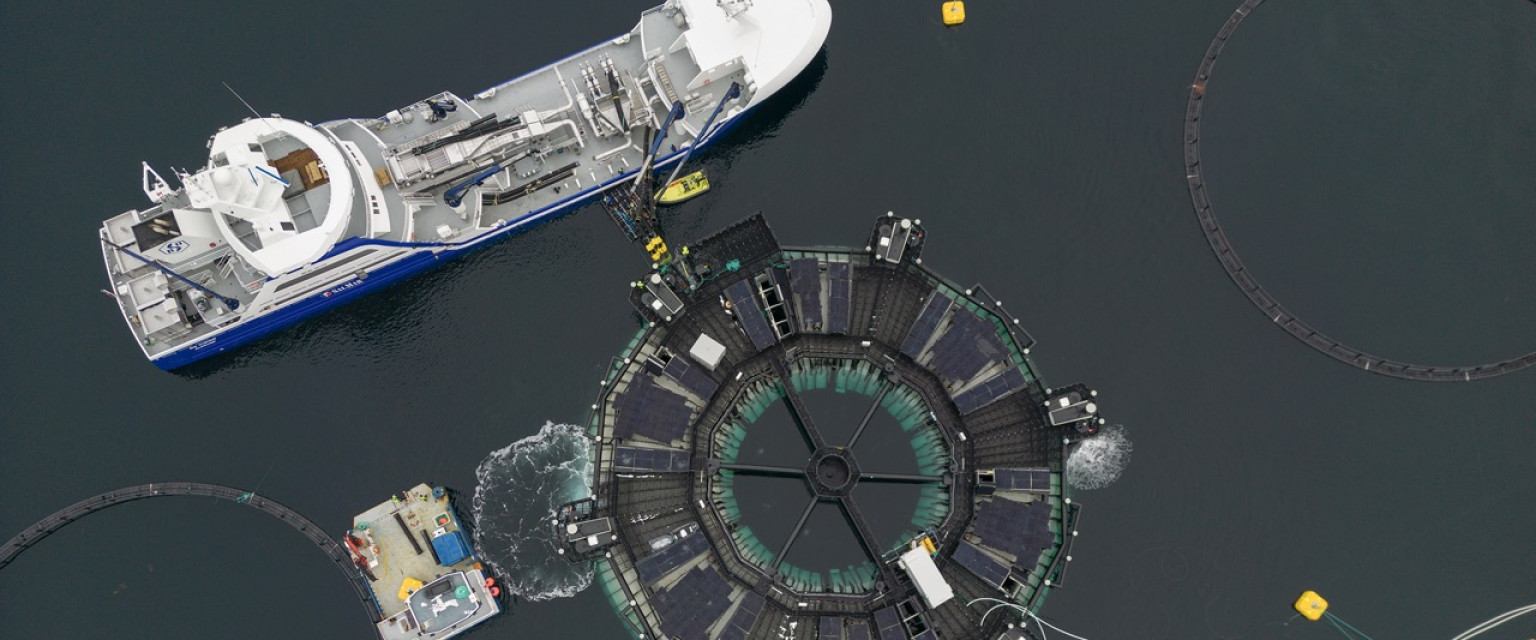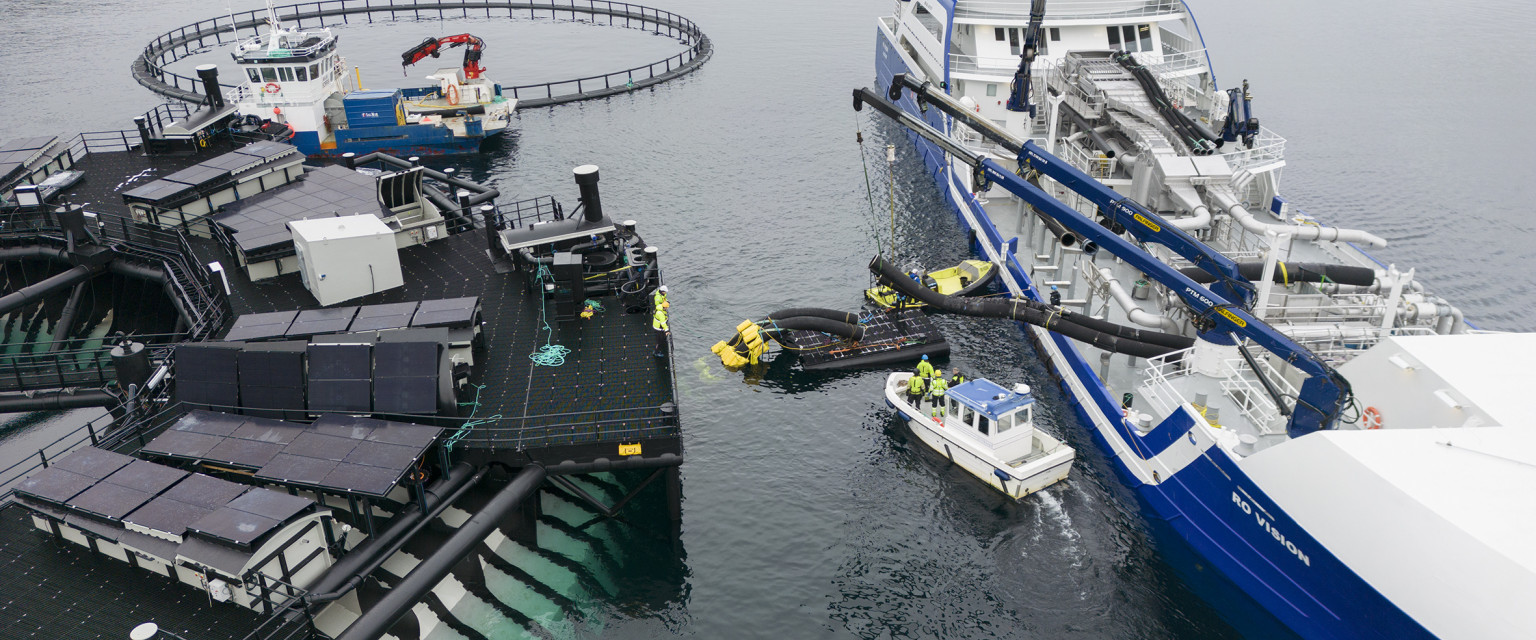Handling live salmon in a wellboat is risky but a crucial activity for the aquaculture industry. A key objective of the Marine Donut project was to develop a concept that could make the process of transferring fish from the fish farm to wellboats as gentle as possible.

During the transfer from traditional pens, salmon is corralled into a small space using seine nets. This can be stressful for the fish. The high density of fish in a confined area also leads to reduced water quality with low oxygen levels. So, how does Marine Donut address this challenge?
Firstly, the Marine Donut is lifted approximately 20% before being connected to the wellboat, and then tilted by 4 degrees. This ensures that water flow is maintained both into and out of the facility. The volume of water is gradually reduced to maintain optimal conditions for as long as possible, minimizing stress for the fish. This contributes to improved fish welfare.
During the transfer, three key parameters are closely monitored:
Oxygen levels
CO2 levels
Temperature
With its advanced sensor technology, Marine Donut makes it easy to track these parameters.
Read more: The Marine Donut Fact Sheet
"When the wellboat arrived, we conducted a simulation of the entire process, from connection to filling the fish and then emptying," says Geir Andresen, project manager at Bluegreen.
And the result?
The test was very successful, and we only had to make a few adjustments. Now we are 100% ready to receive and deliver fish. Our customer SalMar is extremely satisfied!
Geir Andresen, project manager, Bluegreen

